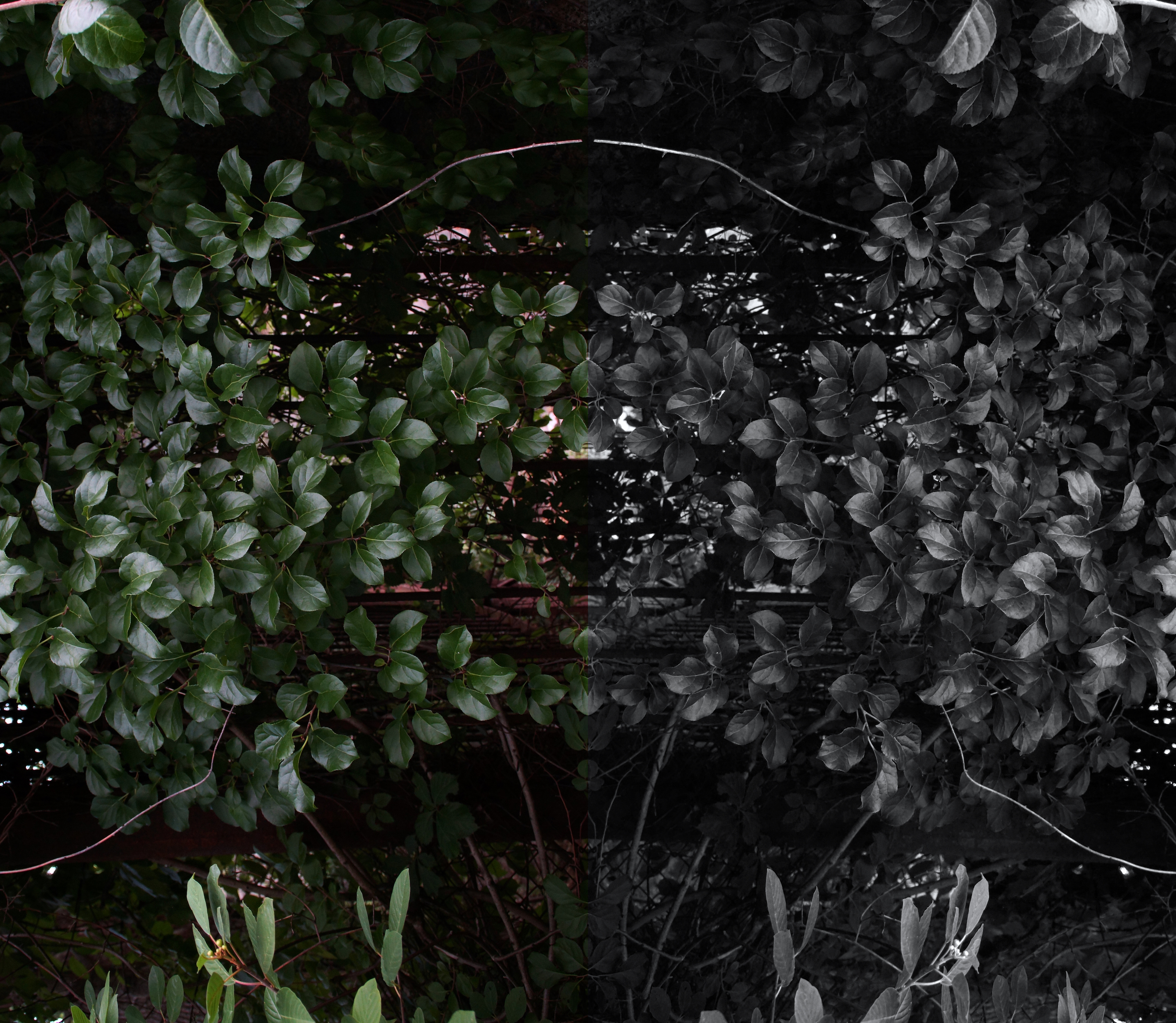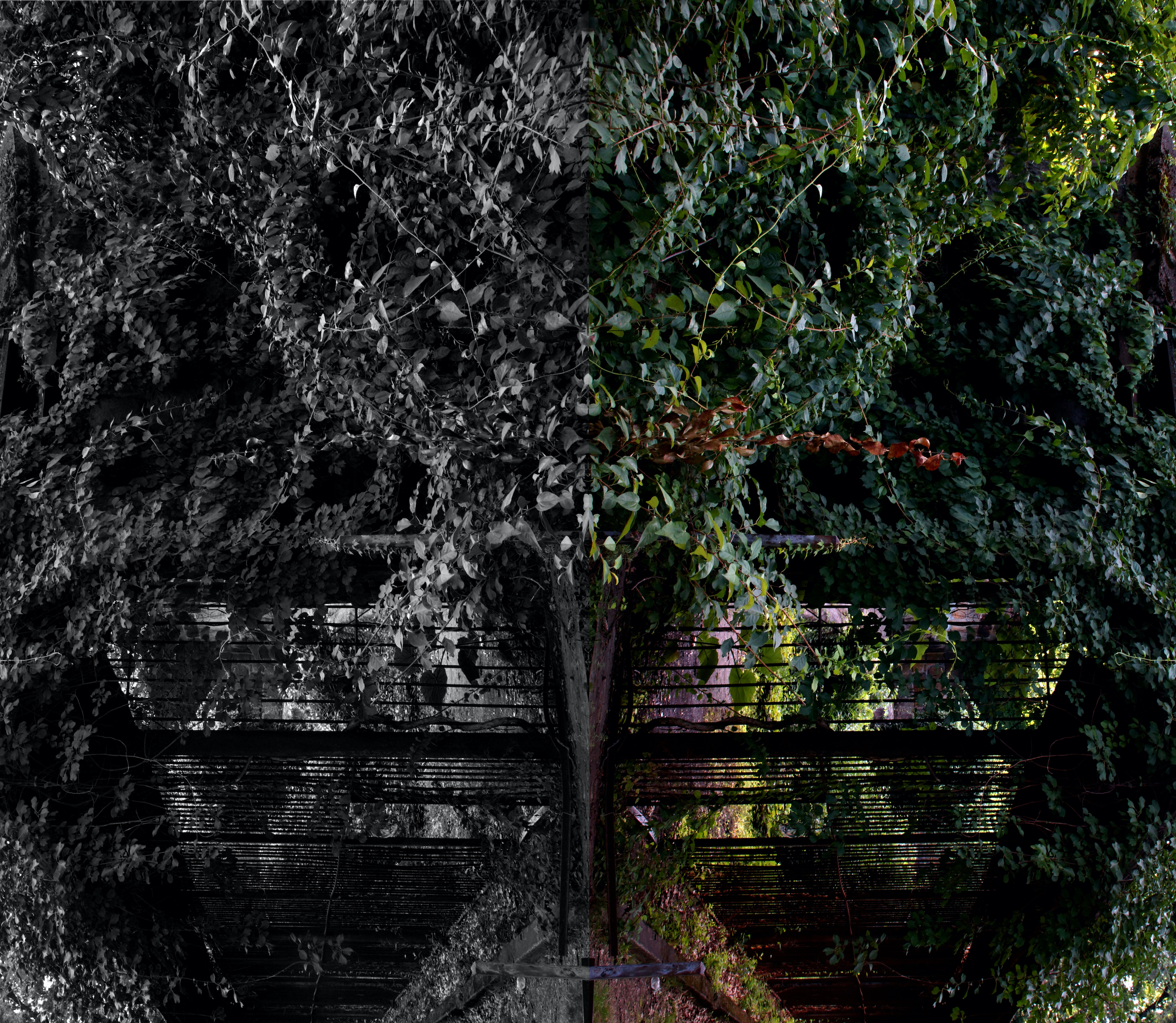BRIGHT ECOLOGIES
Three Studies in the Urban Wild
Contextual essay and photography in collaboration with Patte Loper and Mary Ellen Strom
2020

FP2, 2020, Sheila Novak
As part of AreaCode Art Fair, the collective BRIGHT ECOLOGIES (artists Patte Loper, Mary Ellen Strom and Sheila Novak) is developing experimental artworks in Bozeman, MT, Queens, NY and Boston, MA (respectively). The artists have identified three sites in the ‘urban wilds’ of these three cities, and will develop in-depth relationships with those sites over the course of August, 2020.
Together, BRIGHT ECOLOGIES will develop more-than-human participatory research methods and ethics to develop these new place-based artworks. The artists’ experimental methods and ethos will attempt to enter into shared, playful spaces of interspecies collaboration and care. The artists will create an on-line co-learning/un-learning lab together. The lab will provide a space to share their experiments and findings, compare strategies and present workshops and tutorials.
Working at the intersection of culture and the environment Three Studies in the Urban Wilds will expose ways that the environmental crisis was designed and has been maintained by white settler culture, industry and capitalism. Our climate emergency is accelerating at a much higher speed than white settlers’ awareness, empathy, or policies. Using feminist, radical pedagogical and decolonial ideas and practices, BRIGHT ECOLOGIES will work to develop empathic relationships with non-human change agents for the purpose of social and environmental justice.
![]()
FP1, 2020, Sheila Novak
A Study in the Urban Wild: Boston
by Sheila NovakI first visited the Bear Cages in Franklin Park accidentally. I was suddenly enveloped in fascinating and peculiar historic remnants while working as a dog walker for folks who lived nearby. The cages, old remains of the Franklin Park Zoo before it was consolidated in the ‘50s, hold layered histories and contradictory narratives, evoking a nuanced conversation about how what we build reflects the builder's philosophy. When you stumble upon these cages, they stand almost as a reminder: this seemingly natural space was constructed, just like our city and our country, by white men with their settler-colonial-supremacist philosophies. The decaying cages serve as a monument to the dashed hopes and partially realized vision of a prior generation, which could, perhaps, encourage our humble reflections about our ability to build for the future.
Witnessing entropy serves as a reminder that despite the western egoistic notion that we are producing something beyond nature, everything we do is temporary and the natural world will adapt and absorb and break down our ambitions over time. But most importantly, the site has a magical quietude, which encourages many visitors to feel like they stumbled onto a secret, a space that somehow, in this metropolis, could be their own.
The Bear Cages have 43 reviews on google, with an average of 4.6 out of 5 stars. This high rating feels odd for a site consisting mainly of exposed and rusting iron, large concrete pads, and rock walls that have been painted by visitors, then re-painted grey, as if to match the rock, by City maintenance crews. One google reviewer touted that “ordinary people do not come” to the Bear Cages, which feels like a kind of dare to anyone who might fear their characterization as “ordinary.” There is nothing specific a visitor will do here; rather, the visitor's imagination dictates what is possible. More google reviews capture an array of opinions for the site, which convey the space's overall complexity and inherent contradictions. Some hail the cages as “haunting” and “dangerous.” Others describe the area as “beautiful” and a “hidden gem.” Is the energy “ethereal?” “Eerie?” “Creepy?” “Sad?”
The Zoo was just one part of a large “country” park designed by Frederick Law Olmstead “exclusively with reference to the enjoyment of rural scenery.” The Park and Zoo together were supposed to be the crown jewel of Boston’s Emerald Necklace, a series of green spaces that would wrap the city's edge in a large green embrace. At the time, Olmstead envisioned the parks as a democratizing space, where all people could gather and find space for themselves and each other amidst the City. Now Franklin Park, which sits within historically black and brown communities, contends with legacies of disinvestment and holds a sense of wildness that subverts the more intentional design from 200 years ago.
The Franklin Park Bear Cages opened in 1912, just four short years after the Zoo itself opened. A crowd of 10,000 people came to observe wild black, grizzly, and polar bears from Germany and Yellowstone enclosed in small cages. As part of “Long Crouch Woods,” these bears were on display alongside a menagerie of predominately domestic animals. Nearby badgers and raccoons were also trapped in open-air structures, peering at visitors. Surely thi
s space was full of noise at one time, with families corralling and children crying and giggling. Today, the park is surprisingly quiet, and these cages are vast openings that invite street art and self-seeding plants whose roots will surely break down the stone and concrete over time.
Parthenocissus quinquefolia, aka Virginia Creeper or Woodbine, is native to this region. Yet I cannot find the indigenous name in any American Indian language. Despite its indigeneity, gardeners often consider it a weed. It covers the cages, wrapping tendrils along iron spikes and boring holes into the rock walls that contained wild creatures. With five-leaf clusters, the vine colonizes its domain; its roots can burrow through mortar and stone, and the opportunistic climber quickly covers its host, efficiently choking out and potentially killing the trees on which it climbs.
A kind of “father” of Landscape Architecture, Olmstead’s ideas of ‘social progress’ and ‘reform’ activated his philosophy for building green spaces. And yet the harms of white supremacy manifested through the principles of English landscape gardening which
Olmstead deployed. Olmstead sought to create spaces to heal a society aesthetically rooted in structures of hierarchy and dominance.
Woodbine yields berries poisonous to humans but safe for animals to consume. Yet plant’s derivatives have medicinal purposes, its robust roots prevent erosion control, and the thick foliage provides habitat to birds and small animals. In the bear cages, Woodbine’s encroachment screams of reclamation. As the tendrils of Woodbine illustrate the temporal realities of what we build, the plant also emits a hope: that restoration is indeed possible.
As the City redesigns the park in the coming years, I wonder how the Bear Cages and Virginia Creeper will be treated: as a weed? An eyesore? Or as an opportunity for the future?
